Science-fiction author Arthur C. Clarke once wrote that “any sufficiently advanced technology is indistinguishable from magic.” If the internet and pocket-sized computers haven’t already pushed us across that threshold, the much-heralded arrival of artificial intelligence almost certainly will.
The versions of AI that exist today are already capable of extraordinary feats. Computers with the capacity to learn can now drive cars, create works of original art, beat world masters at their own games, and dream up photorealistic images of humans who don’t even exist. Pop culture, meanwhile, is filled with robots and supercomputers able to match or even surpass the intellect of their human progenitors. Skynet, the Matrix, Hal-900: These are just a few of the most iconic and recognizable examples of AI–each speaking to the anxiety that there will soon come a day when humanity gives birth to a technological consciousness hellbent on our destruction.
Despite the existential baggage this technology comes burdened with, the meteoric rise of the multi-billion dollar AI market is virtually guaranteed for years to come. But what exactly is AI? And how is it being used in the world of construction? In this article, we will attempt to provide a primer on what artificial intelligence is and isn’t while also exploring some of the ways that AI assisted systems are being deployed in the construction industry today.
What Is AI? Artificial Intelligence Definition
There are many different and conflicting definitions, but in essence, artificial intelligence (or AI for short) refers to machines and computer systems that are capable of guiding their own thoughts and actions.
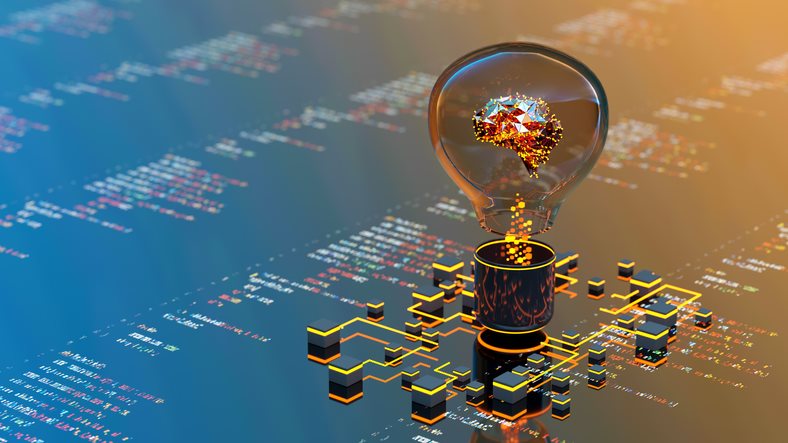
One of the fundamental problems with defining artificial intelligence in this way is that despite the advanced state of modern science, we still have precious little understanding of how human consciousness works, let alone an artificial one. Ask after the nature of the mind and you’ll quickly find yourself tumbling down a philosophical rabbit hole that could lead anywhere from the idea that everything is conscious to the proposition that we’re all trapped inside a computer simulation, and nothing is real to begin with.
Thankfully, we need not go to such abstract lengths for our purposes. Our main interest is how AI driven systems can be used in the down-to-earth work of construction. Before we get to that, let’s take a quick look at where the idea of AI comes from.
A Brief History of AI
Humans have been imagining machines that think and move of their own free will since ancient times. Greek mythology is filled with robotic beings called “automata.” from the lumbering bronze colossus Talos in the Argonautica to the mechanized gold and silver hounds guarding the palace of King Anticlous in Homer’s Odyssey. In the stories, these living machines are beyond the comprehension of mere mortals, having been created by the gods themselves.
Perhaps in defiance of the gods, our ancestors began trying to fashion “living” machines of their own. As early as the 13th century, inventors and engineers were hard at work crafting the world’s first real-life robots, like the waterborne band of musical automatons created by Ismail Al Jazari, the “father of robotics” himself.
With its roots entangled in myth, mathematics, and the development of computer science, the opening lines in the story of artificial intelligence can be traced to the years immediately following World War II, when thinkers like British cryptanalyst Alan Turing began to ask “can machines think?” – a question he proposed might be answered with his famous Turing Test.
It was in 1956 that AI emerged as a legitimate field of study when computer scientist John McCarthy coined the term “artificial intelligence” during an academic conference on the subject at Dartmouth College. Scientists, futurists, and technologists have been hot on the trail of AI ever since.
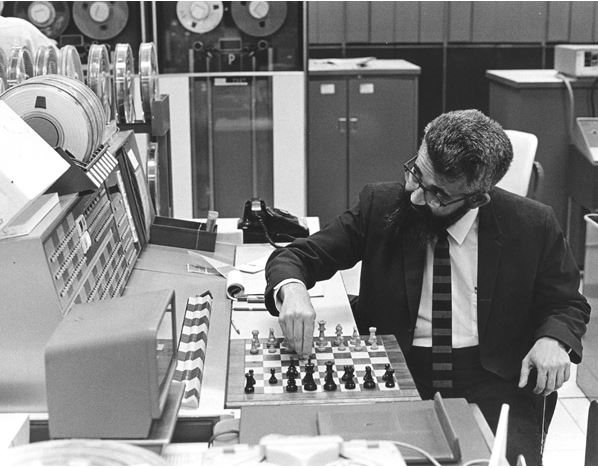
The late John McCarthy, professor emeritus at Standford University, coined the term "artificial intelligence."
Does Artificial Intelligence Exist Today?: Strong vs Weak AI Approaches
Have we successfully given birth to AI here in the futuristic year of 2022? The answer is both yes and no. It depends on what you mean by “AI.” It also depends on who you’re asking. Some computer scientists and businesspeople in the tech sector would tell you that AI absolutely exists, and they would point to a multitude of familiar applications and computer systems as evidence. At the same time, certain philosophers and prominent scientific publications would vehemently deny this claim.
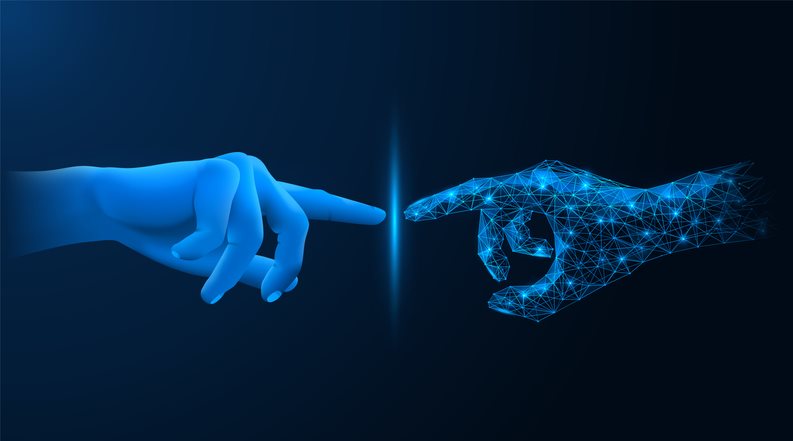
So, which is it? Does AI exist today, or not? Let’s dig in.
Strong AI
As impressive as our computers have become, they still don’t clear the high bar set by what’s called the Strong AI hypothesis. This is the version of AI that you see depicted in classic science-fiction films like Bladerunner, in which conscious machines have become so indistinguishable from humans in appearance and behavior that they can only be sniffed out via a professionally administered Voight-Kampff test.
To qualify as a strong AI (also referred to as general intelligence) a machine must have all the mental capabilities that humans have, from self-awareness and free will to the capacity to learn, form memories, plan for the future, solve problems with logic, and so on. Needless to say, we have yet to create such an advanced version of AI, which (for now) remains more of a theoretical concept than anything else.
Weak AI
What we have managed to create, however, are plenty of what’s called Weak AI: computers or machines that are able to “think” and perform certain tasks–sometimes exceptionally well–within a narrow band of specialization. To the extent that AI can be said to exist today, this is the category into which all current iterations fall.
Online chatbots are prime examples of weak AI, specialized in parroting human communication without being actually conscious. Furthermore, a cleverly designed chatbot might even be a decent conversationalist, but unlike a strong AI, it is completely unable to perform any tasks that fall beyond the narrow parameters of its programming.
3 Common AI Terms
There are a lot of AI-related buzzwords–too many to list here–that get thrown around these days, many of which are often used interchangeably, adding confusion to an already complicated topic. Here’s a quick rundown of three common terms that can help us better understand the types of AI systems that are in use today.
- Algorithms: You’ve heard this one before. But what is an algorithm? Simply put, an algorithm is a set of mathematical instructions that tells a computer precisely how to behave in certain situations. These specialized clusters of code have become ubiquitous over the last two decades, enabling computers to perform increasingly complex forms of calculation and data processing. Algorithms decide not only what a computer will do, but how it will go about doing it, one step at a time.
- Neural networks: Neural networks (otherwise known as artificial neural networks, or ANNs) are the building blocks of machine learning processes (we’ll get to that in a moment). Designed with the intention of mimicking the interconnected nature of the human brain, a neural network is essentially a collection of algorithms organized into multiple node layers. The sharpness and cunning of an AI is determined in large part by how complex and interconnected its neural networks are.
- Machine learning: A subset of modern AI, machine learning is the digital process by which computers use data and algorithms to teach themselves how to “think” in a way that approximates human problem-solving. The goal is to teach computers how to learn for themselves and eventually become co-authors of their own programming, thereby becoming more accurate at their assigned tasks over time.
Machine learning processes require massive amounts of big data, which serve as the raw material that neural networks of highly specialized algorithms comb through in search of patterns and insights which would otherwise go undiscovered. This capability makes machine learning extremely useful for big industries like construction, which generate massive quantities of data every day.
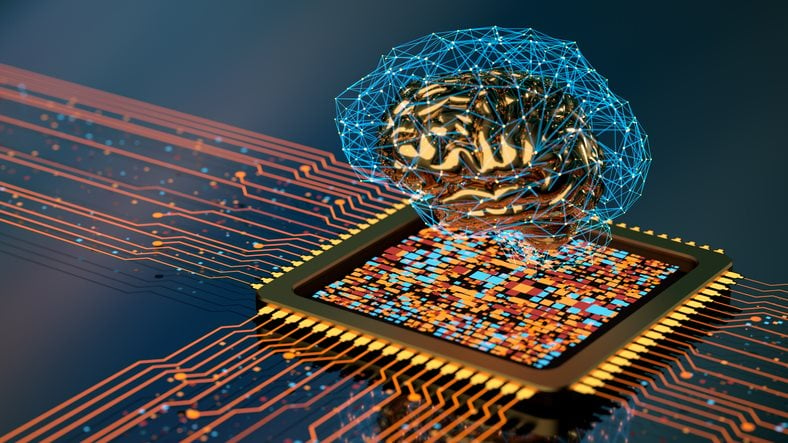
You can find machine learning processes everywhere, powering everything from facial recognition and targeted ads to the recommendation functions that companies like Google, Netflix, and YouTube use to suggest other content you might like based on your previous searches.
AI in Construction Examples
Though historically slow to adopt new technologies, some construction companies have begun to successfully use AI for everything from automating tasks to mining data for actionable insights. Here are a few of the ways that AI is being used in the construction industry today:
- Construction robots
- Wearable tech
- BIM + AI
- Data analytics
- Tool tracking technology & the internet of things (IoT)
1. Construction robots
Artificial intelligence need not be confined to the disembodied realm of cyberspace. It can also be deployed alongside skilled workers to help solve problems on real-world jobsites. There are already several AI driven construction robots capable of performing a wide range of jobsite-related tasks. If deployed correctly, these machines have the potential to reduce project costs, increase safety, improve efficiency, and free-up workers to focus on less repetitive and backbreaking activities.
Boulder, Colorado based startup Canvas, for instance, has built an AI assisted robot that can finish drywalls. About the size of a laundry machine, this four-wheeled automaton uses LiDAR to “see” whatever room it’s placed in. Once it has a clear picture of its surroundings, the machine’s computer guides a robotic arm through the motions of sanding surfaces and spraying on layers of drywall compound.
Another company called Built Robotics has developed the technology to operate excavators without the guidance of a human pilot. By hooking them up to a bulky solar-powered computer called the Exosystem, the company can retrofit virtually any late-model excavator into an autonomous drone on treads. Tasks are programmed in with geofences while a multi-layered array of sensors, cameras, radar, remote kill-switches, and other measures are used to ensure safety. Caterpillar and Japanese company Komatsu are working on similar technology.
https://youtu.be/drB3-KtpbO4
Some other examples of robots that are beginning to appear on construction sites include the bricklaying Semi-Autonomous-Mason (SAM), a robotic welder arm by AWI, an automated elevator installation system, and a growing variety of airborne drones. Boston Dynamics is also in the early stages of exploring how its robotic dog Spot can use machine learning to perform site inspections. Meanwhile, programmable large-scale 3D printers are also being used to automatically build entire structures from the ground up.
All of the robotic systems listed here still require at least some oversight by a human operator. Will the construction robots of the future be able to operate with even more independence than they already do? Only time will tell.
2. Wearable Tech
With construction risk so concerning, wearable tech is helping contribute large amounts of jobsite data that we’ve never had before, which enables AI algorithms, like risk analysis. Artificial intelligence can now be slipped on like an article of cybernetic clothing. By extending the sensory and data analysis capabilities of their users, wearable devices infused with AI can save money, boost productivity, and give construction companies an edge on their competition.
Buildots is a tech company based out of Tel Aviv, Israel that’s created a wearable machine learning system capable of identifying discrepancies between BIM models and in-progress construction. A 360-degree camera mounted on a user’s helmet captures images of the site and compares the results to the virtual model stored in BIM. An AI specialized in visual analysis then sifts through the images in search of schedule deviations, incorrect installations, and partially completed tasks, displaying a comprehensive report on the company’s app.
https://www.youtube.com/watch?v=1u1hhrMVBvw
Another wearable technology that shows promise is smart glasses. These futuristic specs use augmented reality to superimpose layers of data and graphics into a wearer’s POV. The technology is still in its early stages, but the seamless integration of smart glasses with AI powered computer systems is almost certainly in the cards in the years to come. Imagine walking through a construction site wearing a smart headset that’s wirelessly connected to an AI infused 360 degree camera. An AR overlay of the structure’s BIM model could be displayed on your headset while the AI automatically identified discrepancies between the two in real-time.
3. BIM + AI
Speaking of BIM, Building Information Modeling is a digital design tool that enables users to create multi-dimensional interactive 3D models of structures during every stage of a construction project’s lifecycle. As you can imagine, it takes an enormous amount of data—as well as human expertise–to create and use a BIM model properly, making this ripe territory for AI. Computer scientists at Autodesk, a BIM software company based out of California, have been hard at work in recent years experimenting with how machine learning can improve the efficiency and effectiveness of Building Information Modeling applications.
https://youtu.be/CtYRfMzmWFU
These explorations have yielded a number of breakthroughs, including something called generative design. This AI assisted method of design enables BIM users to rapidly generate thousands of design options optimized for everything from strength to sustainability. Machine learning processes like the ones used by BIM 360 Construction IQ can also be deployed to analyze BIM datasets for opportunities to mitigate risk, increase safety, and reduce project costs.
4. Data Analytics
Construction is a data rich business. Whether its schedules, payroll, inspection reports, safety plans, geo-spatial surveys, or inventory and supply chain logistics, there are plenty of big datasets in the construction industry that can be mined for actionable insights. When such enormous amounts of data are involved, however, it can be difficult to know where to start.
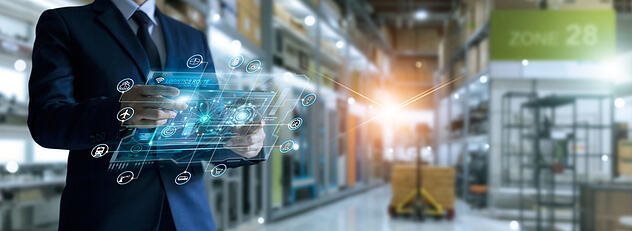
Tech startups like Newmetrix use predictive machine learning processes to identify safety hazards on construction sites and develop solutions for avoiding them before an incident can occur. These kinds of computer assisted systems can be incredibly beneficial in the hands of safety managers, who can use them to more efficiently monitor for risks and create superior safety plans.
AI assisted software from companies like Togal.ai provide exciting examples where a big data set of previous projects can be used to teach that model what pieces of information from blueprints correlated to estimations, empowering owners to make data-driven decisions. Other applications like Oracle’s Construction Intelligence Cloud Service leverage a suite of machine learning tools that comb through mountains of data to predict everything from scheduling delays, cost overruns, resource bottlenecks, and project inefficiencies. Alice technologies, meanwhile, uses AI to help contractors generate better schedules for their projects.
5. Tool Tracking Technology and the Internet of Things (IoT)
There are a number of applications of AI in the power tool space to help tradespeople work smarter; the advent of IoT-connected devices represent how power tool hardware and cutting edge software can work together, from improving performance at the task-level to keeping a vigilant eye on where everything is.

Milwaukee® Tool has created algorithms that draw data from motor drive and motor load to mitigate kickback in bind up situations that may otherwise cause damage to materials and user harm. The ONE-KEY™ team has used AI in the past to automate quality assurance processes, but more recently as evidenced in a feature by IEEE Spectrum, we’ve used AI to improve our tool tracking capabilities.
Bottom Line: The Future of AI in Construction
Once thought to be the stuff of science-fiction, robots and learning machines are already beginning to transform how work is done in the world of construction, as well as who–or what–does it. Construction companies would be wise to hire a construction technologist and remember that AI is just a tool like any other. The health, safety, and wellbeing of human workers must always remain the number one priority.
Wherever you fall on the matter, there’s no question that AI has captured our collective imagination, with some of the wealthiest and most powerful people on Earth extolling both the wonders and dangers that this transformative technology portends. The future is unclear, but it’s almost certain that some version of AI will be there with us, reshaping the world in ways that we have yet to even imagine.